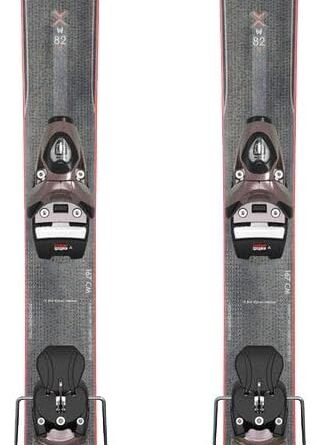
If you’re an enthusiast of cold-water sports and in need of the perfect pair of neoprene gloves, look no further! The Ultimate Guide to Choosing Neoprene Gloves for Cold-Water Sports has got you covered. Whether you’re into surfing, kayaking, or scuba diving, finding the right gloves to keep your hands warm and flexible is crucial. From thickness and insulation to grip and durability, this comprehensive guide will walk you through everything you need to know to make a well-informed decision. Stay comfortable and protected in the water with the help of this ultimate glove-buying guide.
The Ultimate Guide to Choosing Neoprene Gloves for Cold-Water Sports
If you are someone who loves cold-water sports like surfing, diving, or kayaking, then you know the importance of having the right gear to keep you warm and protected. One essential item that you can’t overlook is a pair of neoprene gloves. Neoprene gloves are specially designed to provide insulation, protection, and flexibility to keep your hands comfortable and functional in chilly water temperatures.
But with so many options available in the market, how do you choose the best neoprene gloves for your needs? In this comprehensive guide, we will explore the key considerations that you should keep in mind to make an informed decision. From the material and thickness to insulation, fit, grip, cuff style, seams, durability, price, and brand reputation, we will cover it all.
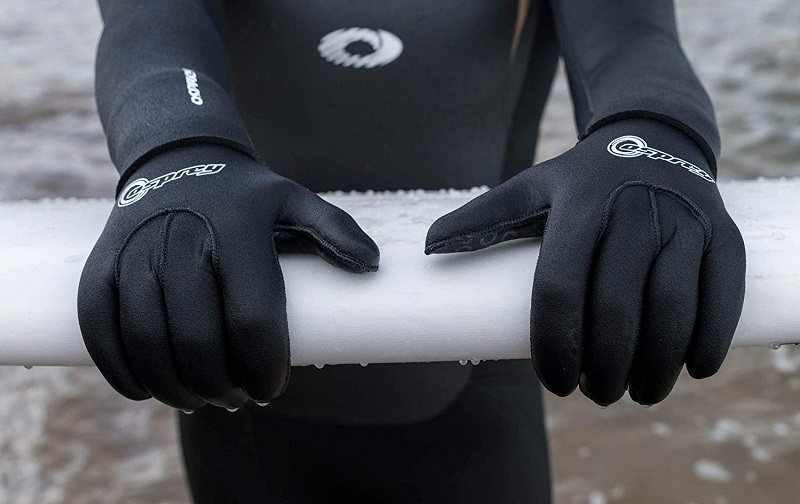
This image is property of standuppaddleboardworld.com.
Material
The material of the neoprene gloves plays a crucial role in determining their performance and durability. Here are some commonly used materials:
Neoprene
Neoprene is the most popular material for cold-water sports gloves. It is highly flexible, offers excellent insulation, and provides a snug fit to keep your hands warm. Neoprene gloves are also resistant to oils, chemicals, and UV rays, making them suitable for various water conditions.
Nylon
Nylon is often used in combination with neoprene to enhance the durability and abrasion resistance of the gloves. Neoprene gloves with nylon overlays are perfect for activities that involve contact with rough surfaces, such as paddleboarding or rock climbing.
Polyester
Polyester is another material that is commonly blended with neoprene to improve the glove’s strength and resistance to wear and tear. It also helps in quick-drying, keeping your hands comfortable during extended water sessions.
Kevlar
Kevlar is a high-strength synthetic fiber known for its exceptional durability and resistance to cuts and punctures. Neoprene gloves with Kevlar reinforcements are ideal for activities that involve sharp objects or intense physical contact, such as spearfishing or lobster diving.
Latex
Latex is a natural rubber material famous for its excellent grip and dexterity. Neoprene gloves with latex palm and finger coatings provide superior control and sensitivity, making them suitable for activities that require precise movements, like photography or fly fishing.
Silicone
Silicone is often used as a grip enhancer, offering a sticky and non-slip surface on the palms and fingers of neoprene gloves. This feature comes in handy when you need a secure hold on your equipment or when gripping wet surfaces, such as paddle shafts or ropes.
Thickness
The thickness of neoprene gloves determines the level of insulation they provide. Here are some common thickness options available:
2mm
2mm neoprene gloves are suitable for mild water temperatures (around 65°F or 18°C) or as an additional layer underneath thicker gloves for added warmth.
3mm
3mm neoprene gloves are versatile and can withstand water temperatures around 55°F to 65°F (12°C to 18°C). They strike a balance between flexibility and insulation.
4mm
4mm neoprene gloves offer increased warmth and are recommended for water temperatures between 45°F and 55°F (7°C and 12°C). They provide a good balance between mobility and protection.
5mm
5mm neoprene gloves are designed for colder water temperatures ranging from 40°F to 50°F (4°C to 10°C). They provide excellent insulation while still allowing for decent dexterity.
6mm
6mm neoprene gloves are ideal for very cold water conditions and temperatures below 40°F (4°C). They offer maximum insulation but can limit hand movement to some extent.
7mm
7mm neoprene gloves are best suited for extremely cold-water activities, such as ice diving or winter surfing. With thick neoprene layers, they provide excellent insulation but may sacrifice mobility to some extent.
Insulation
Insulation is a critical factor to consider when choosing neoprene gloves for cold-water sports. Here are some insulation options you can look for:
Thermal Lining
Thermal lining is a layer designed to trap heat and keep your hands warm. It is often made from materials such as polypropylene or fleece and provides excellent insulation even in frigid water temperatures.
Fleece Lining
Fleece lining is soft, cozy, and adds an extra layer of warmth to the gloves. It provides excellent insulation and moisture-wicking properties, keeping your hands dry and comfortable throughout your water activities.
Merino Wool Lining
Merino wool is a natural fiber known for its exceptional warmth and moisture-wicking properties. Neoprene gloves with Merino wool lining offer superior insulation, breathability, and odor resistance.
Thinsulate™ Technology
Thinsulate™ is a lightweight synthetic insulation material that provides excellent warmth without adding extra bulk. Gloves with Thinsulate™ technology provide exceptional insulation while allowing for good dexterity and mobility.
Polyolefin Lining
Polyolefin is a synthetic material known for its excellent thermal properties. Neoprene gloves with a polyolefin lining are perfect for extended water sessions in cold temperatures, as they provide long-lasting insulation and comfort.
Fit
Finding the right fit is crucial to ensure that your neoprene gloves perform optimally. Here are some factors to consider:
Measurements and Sizing
When choosing neoprene gloves, make sure to refer to the manufacturer’s sizing guide to find the best fit for your hand. Taking accurate measurements of your hand circumference and length will help you select the right size and avoid discomfort or limited dexterity.
Pre-curved Design
Gloves with a pre-curved design mimic the natural shape of your hand, allowing for better grip, flexibility, and overall comfort. They ensure that your fingers are in the ideal position for handling equipment and performing precise movements.
Stretchable
Stretchable neoprene gloves not only provide a snug fit but also allow for flexibility and freedom of movement. They adapt to the shape of your hand and ensure that you can maintain natural dexterity.
Snug Fit
A snug fit is essential to prevent water from entering the gloves and to optimize insulation. Gloves that are too loose can compromise their effectiveness, while excessively tight gloves can restrict blood flow and cause discomfort.
Adjustability
Some neoprene gloves come with adjustable straps or cuffs that allow you to customize the fit according to your preference. This feature ensures a secure and personalized fit, preventing water from entering and increasing comfort.
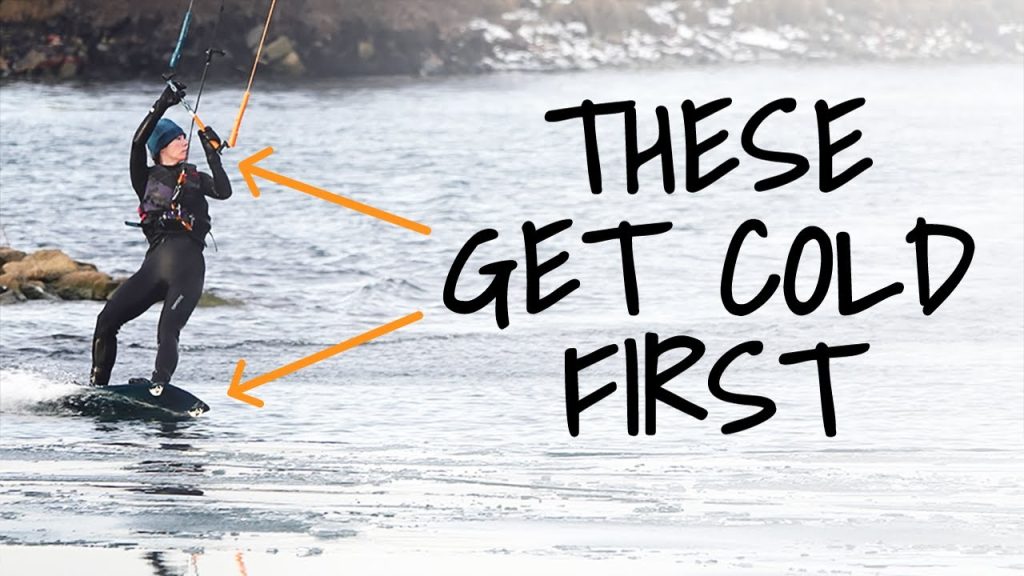
This image is property of i.ytimg.com.
Grip
Having a reliable grip is vital for cold-water sports activities. Here are some grip options to consider:
Textured Palms
Neoprene gloves with textured palms offer increased grip on various surfaces, such as paddle shafts, surfboards, or rocks. The texture provides traction and prevents slippage, enhancing your control and stability.
Rubberized Coating
Gloves with a rubberized coating on the palms and fingers offer exceptional grip, even when wet. The rubberized surface creates a tacky feel and prevents your hands from slipping, allowing you to maintain a secure hold on your gear.
Anti-slip Patterns
Some neoprene gloves feature anti-slip patterns or dots on the palms and fingers, enhancing grip and control. These patterns increase friction and provide additional traction, ensuring that you can confidently handle your equipment.
Grip Enhancements
Certain gloves offer grip enhancements with specialized materials or coatings, such as Kevlar or silicone overlays. These enhancements provide superior grip and durability, making them suitable for activities that require a firm hold, such as rope handling or ice climbing.
Cuff Style
The cuff style of your neoprene gloves significantly impacts convenience, protection, and fit. Here are some common cuff options available:
Long
Neoprene gloves with long cuffs provide extended coverage and protection for your wrists. They prevent water from entering and help maintain warmth in colder water temperatures.
Short
Short-cuffed neoprene gloves are more streamlined and allow for greater freedom of movement. They are ideal for activities that require a higher degree of dexterity, such as photography or fishing, where a longer cuff may restrict wrist movements.
Elastic Cuff
Gloves with an elastic cuff ensure a snug fit and prevent water from entering. The elastic material provides a secure closure around your wrists, keeping the gloves in place during your water adventures.
Velcro Closure
Neoprene gloves with Velcro closures offer adjustability and allow you to tighten or loosen the cuff according to your preference. The Velcro closure ensures a secure fit while allowing for easy donning and removal.
Zippered Cuff
Some gloves feature zippered cuffs, providing a tight seal and further preventing water from entering. The zippered closure adds an extra layer of security and convenience, ensuring that the gloves stay in place even during intense water activities.
Glued and Blind-Stitched Cuff
Gloves with glued and blind-stitched cuffs offer excellent durability and water resistance. The glued and blind-stitched construction ensures that the seam is watertight and prevents water from seeping in, keeping your hands dry and warm.
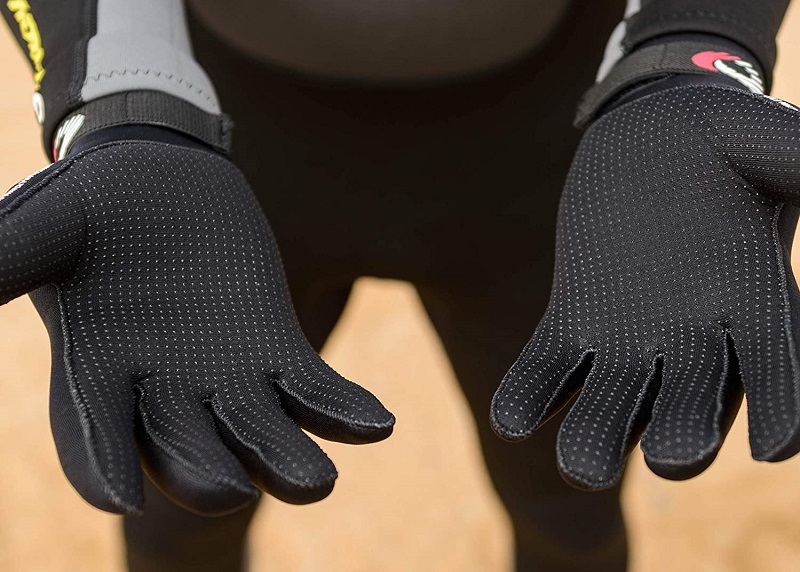
This image is property of standuppaddleboardworld.com.
Seams
The type of seams used in neoprene gloves affects their durability and water resistance. Here are some common seam options available:
Glued
Gloves with glued seams use an adhesive to join the neoprene pieces, creating a water-resistant bond. Glued seams provide good durability but may not be as effective in preventing water entry as other seam types.
Blind-Stitched
Blind-stitched seams involve stitching the neoprene pieces without fully penetrating them, resulting in a neat and flat seam that minimizes water seepage. This type of seam is durable and offers good water resistance.
Taped
Taped seams involve covering the stitches of the blind-stitched seam with waterproof tape. This added layer of protection ensures superior water resistance and durability, making it an excellent choice for cold-water activities.
Liquid-Sealed
Liquid-sealed seams use a liquid rubber or neoprene compound to seal the stitches completely. This type of seam creates a watertight seal, preventing any water from entering the gloves.
Welded
Welded seams involve using heat and pressure to bond the neoprene pieces together, creating a watertight and highly durable seam. Welded seams offer excellent water resistance and longevity, making them suitable for rigorous water sports.
Durability
When investing in neoprene gloves, durability is a crucial factor to consider. Here are some aspects that contribute to the gloves’ durability:
Abrasion Resistance
Neoprene gloves with reinforced areas or overlays offer increased abrasion resistance, protecting them from wear and tear during intense water activities or contact with rough surfaces.
Puncture Resistance
Gloves with puncture-resistant features, such as Kevlar reinforcements or anti-tear materials, provide extra protection against sharp objects or accidental punctures, ensuring the longevity of the gloves.
Reinforced Fingertips
The fingertips of neoprene gloves often undergo the most stress and wear. Gloves with reinforced fingertips offer added durability and prevent premature wear in this high-stress area.
Double-Layered Palm
Gloves with a double-layered palm construction enhance durability and protect against excessive wear caused by gripping equipment, rocks, or other surfaces. The double layer adds an extra barrier while maintaining flexibility and sensitivity.
Anti-tear Materials
Certain neoprene gloves use anti-tear materials in high-stress areas, such as the palms or between the fingers. These materials resist tears and punctures, ensuring that the gloves can withstand demanding water activities without compromising their integrity.

This image is property of standuppaddleboardworld.com.
Price
The price of neoprene gloves can vary significantly depending on factors such as brand, material, features, and durability. It is essential to set a budget and find gloves that offer a good balance between quality and affordability. Remember that investing in high-quality gloves can provide better performance, longevity, and ultimately, a more enjoyable cold-water sports experience.
Brand Reputation
When choosing neoprene gloves, it is worth considering reputable brands known for their quality and customer satisfaction. Brands with a strong reputation often invest in research and development, ensuring that their gloves are designed to meet the specific needs of cold-water sports enthusiasts. Additionally, customer reviews can provide insights into the performance, durability, and overall satisfaction of the gloves.
With all these considerations in mind, you are now equipped to choose the best neoprene gloves for your cold-water sports endeavors. Remember to assess your specific needs, preferences, and budget before making a final decision. Stay warm, protected, and enjoy every moment in the water with the perfect pair of neoprene gloves!
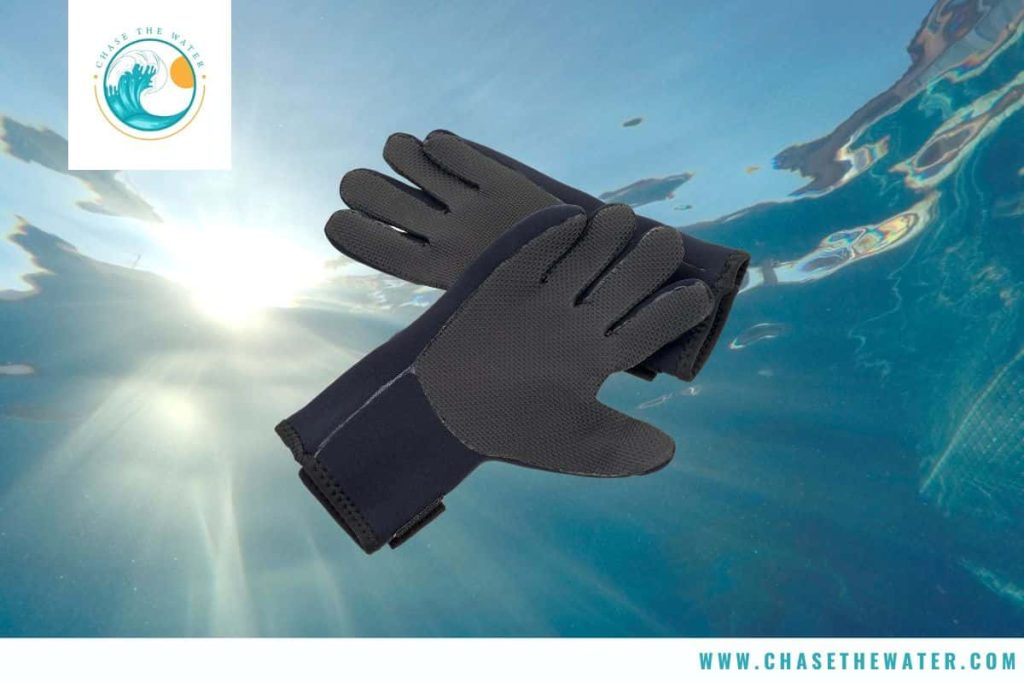
This image is property of chasethewater.com.






